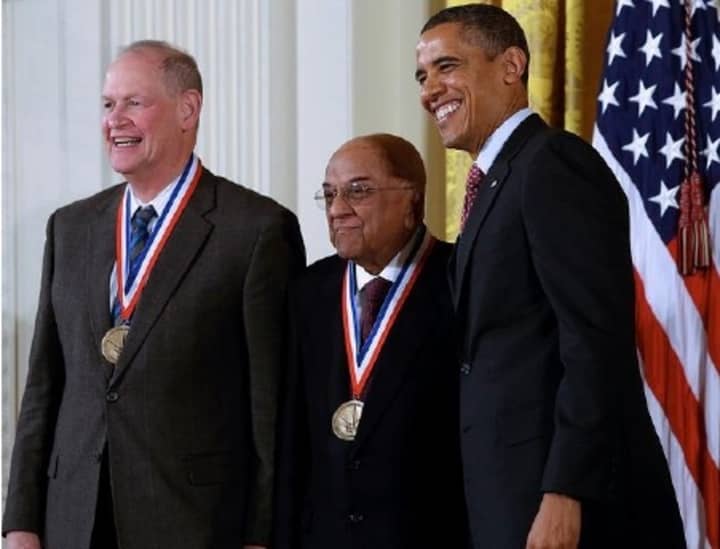A senior scientist at Thomas J. Watson Research Center in Yorktown Heights, Wynne was honored by President Barack Obama with the National Medal of Technology and Innovation at a special White House ceremony on Feb. 1.
Obama hung a medal around Wynne’s neck, along with fellow IBM scientist Rangaswamy Srinivasan, 83 (the team’s third member, Samuel Blum, 92, was honored posthumously). The three researchers invented excimer laser surgery in the early 1980s, laying the foundation for laser refractive surgery, or LASIK.
Each of the 20 laureates, half of whom were there to receive the National Medal of Science, took a private photo with the president.
Wynne, 69, said he and Obama have a few superficial connections: "We were both educated at the same school (Harvard University), so we share that.” And, he added that “his wife has had laser eye surgery.”
But while prominent figures like First Lady Michelle Obama are one of the 25 million people in the world who have had the surgery, the most important to him is his own son.
“The single best reward to me was that my own son had the surgery about six or seven years ago. He was myopic with astigmatism and now he sees 20/15 in each eye,” said Wynne.
In the 1980s. Wynne said he bought one of the new excimer lasers for his team, and Srinivasan discovered he could make a very clean etching on plastic, a material that is used in IBM technology for circuit boards.
An experiment to etch the cartilage of a leftover Thanksgiving turkey bone led the team one step further to testing the theory that excimer lasers could etch just as finely on live human and animal tissue.
And even after 43 years working at IBM, Wynne is still working toward new development in laser technology. Collaborating with a dermatologist, Wynne is currently studying how the excimer laser could be used to remove necrotic skin lesions, like those from a third degree burn. Currently, doctors use a scalpel.
However, like with LASIK eye surgery, this new method would eliminate collateral damage to healthy tissue, allowing for more rapid healing and less pain, Wynne said.
Within the next one or two years, Wynne said, he hopes to work with medical institutions to continue testing the theory on necrotic tissue, hopefully developing a cost-efficient procedure that can be done outside the operating room.
Click here to follow Daily Voice Mt. Kisco and receive free news updates.



